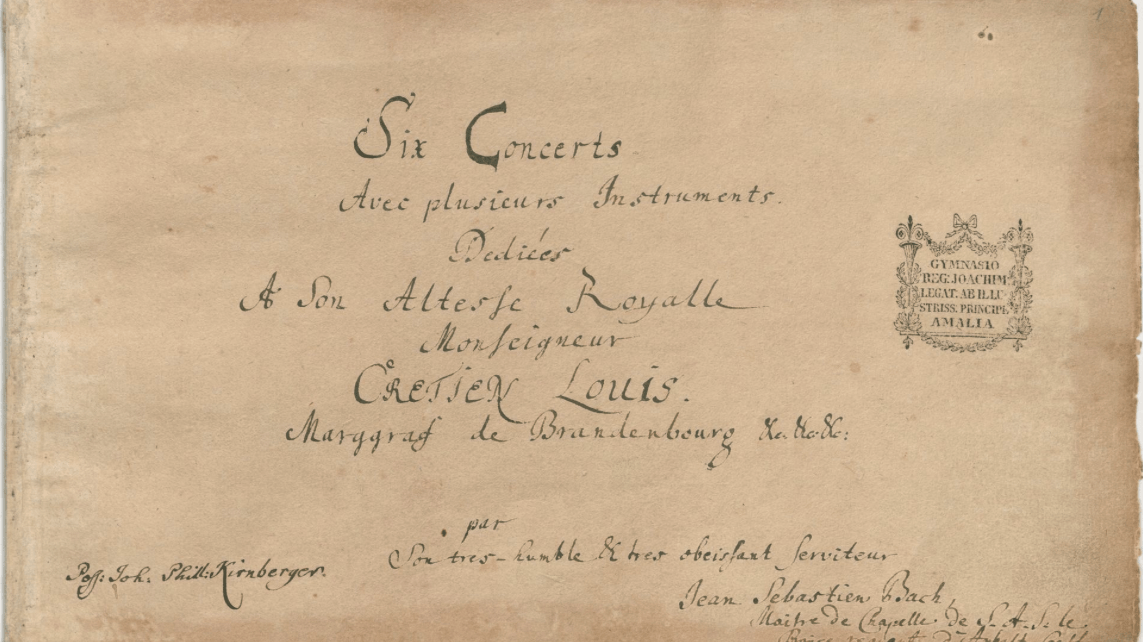Today’s post concludes our survey of Bach’s six Brandenburg Concertos. Follow these links to revisit the First, Second, Third, Fourth, and Fifth Concertos.
J.S. Bach’s six Brandenburg Concertos are thrillingly disobedient rule breakers. They are examples of the Baroque concerto grosso form, developed by Italian composers like Vivaldi, in which small groups of solo instruments engage in a vibrant dialogue with the full, large (grosso) ensemble. But they frequently turn this existing model on its head, featuring new, unusual combinations of instruments, and breaking down notions of “prominent” and “supporting” voices.
Nowhere is this more apparent than in Concerto No. 6 in B flat Major, the final piece in the set. Here, the violins are omitted, allowing the rich, low string instruments to take center stage in the musical drama. The work is scored for two violas (in Bach’s time they were called viola da braccio), two viola da gamba (similar to the cello), cello, violone (an early form of the double bass), and harpsichord. In a thrilling role reversal, the violas step into the spotlight, liberated from their “supporting” role, while the viola da gamba takes a step back. Bach’s employer, Prince Leopold, played the viola da gamba and musicologists speculate that he played the Concerto with Bach assuming the more demanding viola part.
As you listen to the first movement, notice the distinct atmosphere that is created as the low voices rise to prominence. Harmonically, this is music which unfolds leisurely, relishing the moment and the power of a single chord. Amid vibrant, canonic, contrapuntal conversations, the voices of solo instruments and the group blend into a single, benevolent celebration.
The second movement is a beautiful, lamenting duet between the violas. Interestingly, this music begins in E-flat and gradually transitions to the minor, arriving on a final cadence in G minor.
The final movement is a spirited yet elegant gigue which ventures into a series of virtuosic and far-reaching variations before returning home.
Bach compiled the six groundbreaking Brandenburg Concertos in 1721 as a kind of musical résumé for an unsuccessful job inquiry. Their recipient, Prince Ludwig, the Margrave of Brandenburg, never responded and may not have opened the bundle of scores. We are the rich recipients of this sublime, revolutionary, and timeless music.
Five Great Recordings
- Trevor Pinnock and the European Brandenburg Ensemble Amazon (This 2007 recording is featured, above).
- Freiburger Barockorchester (live performance)
- Benjamin Britten and the English Chamber Orchestra
- Christopher Hogwood and the Academy of Ancient Music
- Akademie für Alte Musik Berlin


Absolutely lovely. It looks like I will be adding these recordings to my collection. Musica Antiqua Koln’s recording should be added to the list of best recordings, in my humble opinion. Thank you.